Felling Axe vs Splitting Axe: Understand the Differences
Simply put: felling axes chop, while splitting axes split.
Felling axes (chopping axes) have lighter, thinner heads used to chop into the side of trees to cut them down, remove branches, and buck logs on the ground. But, most are also capable of light splitting. Splitting axes have heavier, wider heads designed only to split logs apart along the grain.
There are a variety of different patterns of both chopping and splitting axe. And while the core difference is the design of the head, there are other traits that will make an axe better suited for chopping or splitting.
The Felling & Chopping Axe
Felling axe and chopping axe are two names for the same type of axe. “Felling” refers to the specific task of cutting down a standing tree, while “chopping” is a broader term that could mean cutting into the side of a tree, log, or branch across the grain.
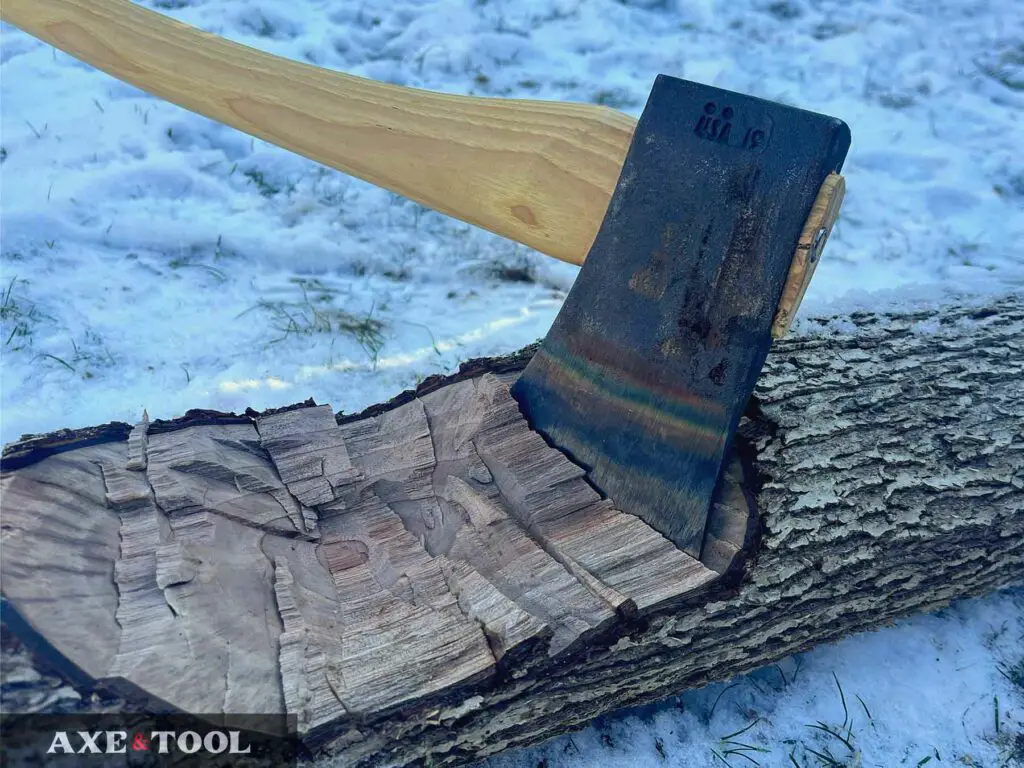
These axes can be specialized for unique rolls, but common uses for most felling axes are:
- Felling a tree: Chopping down a tree.
- Limbing: Removing branches from the trunk or main stem.
- Bucking: Chopping fallen trees/logs into smaller segments on the ground.
- Clearing Brush: Chopping through the undergrowth and small trees to help create pathways and clear spaces.
- Carving & Shaping: Smaller and light-weight “camp axes” or “forest axes” can also be used for camp-craft and bushcraft tasks. Shaping wood for shelter and improvised tools.
- Light Splitting: Most axes are at least capable of splitting smaller pieces of wood into kindling.
Can you Split with a Felling Axe?
Most chopping or felling axes are capable of light splitting, but many are not well suited to breaking down anything larger than firewood. The thinner blade will stick in larger logs and doesn’t create enough sideways force to split the wood apart.
But, some thicker full-size American patterns (Like old Michigans) or chopping axes with a strong wedge profile can make decent splitters. Historically, lots of people who only had a single axe would use it both chopping and splitting.
The heavier the head and thicker the profile, the better the axe will be for splitting.
Variations of Felling Axe Head
Chopping axes come in different head designs with features that can make them better at specific tasks like limbing or bucking, or even better suited for different types of wood.
While there are lots of names for some of these designs (known as patterns), it’s more important to understand the characteristics:
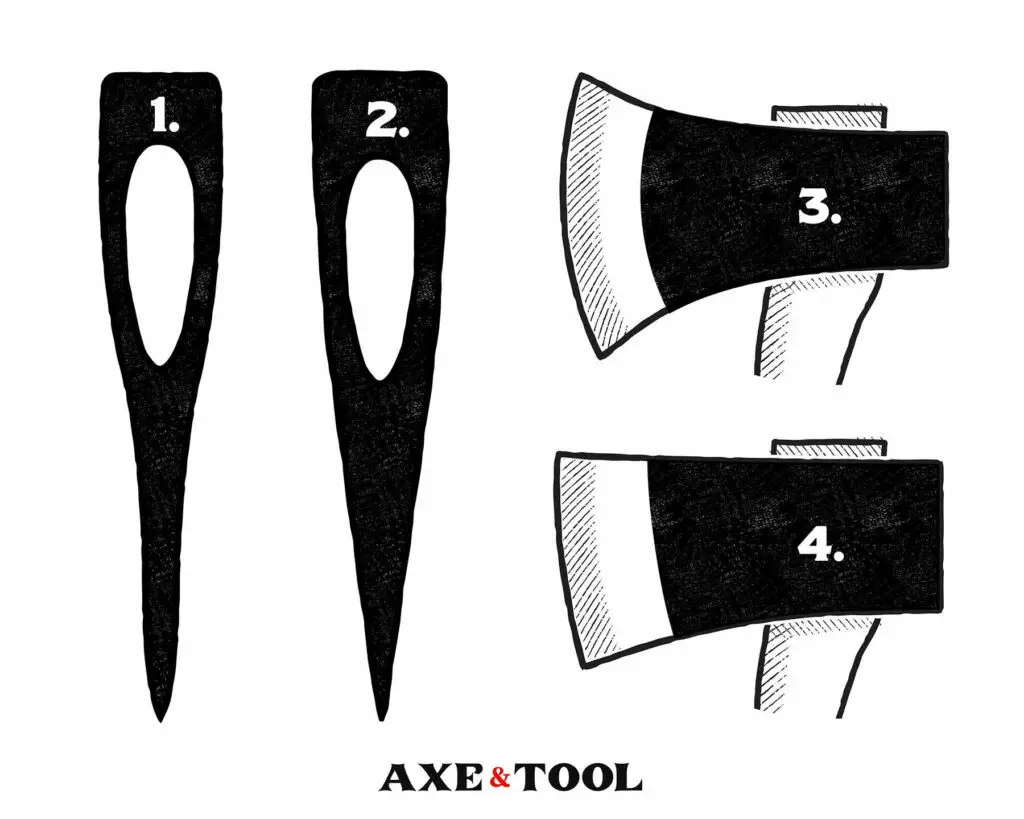
- Longer, thinner blades dig deeper into hardwoods and large trees as the force is concentrated, which helps in denser wood.
- Thicker wedge-shaped blades pop out larger chunks in softwoods, as the wedge pushes them out.
- Wide, curved blades make clearing branches, brush, and small trees easier as they can be quickly used with less need for accuracy. And the longer cutting edge can catch multiple branches.
- Axes with a flatter top are best for bucking (chopping logs on the ground), as the toe (top corner), is less likely to dig into the dirt and hit damaging debris like rocks.
- Lightweight heads (2lbs and under) are best for camp craft tasks, while still being very efficient choppers for small trees.
- Heavier Heads (3lbs and up) are best for heavy chopping of trees 12+ wide and up, and will also have added splitting capability for an all-around work axe.
Felling Axe Handles
Felling axes usually have curved handles, but they can be straight as well.
Curved handles on an axe are more ergonomic and balanced for horizontal swings (felling) and allow for a little extra rotation and comfort when bucking wood on the ground.
I have a full post that dives into the differences between straight vs curved handles.
Sizes of Felling Axe
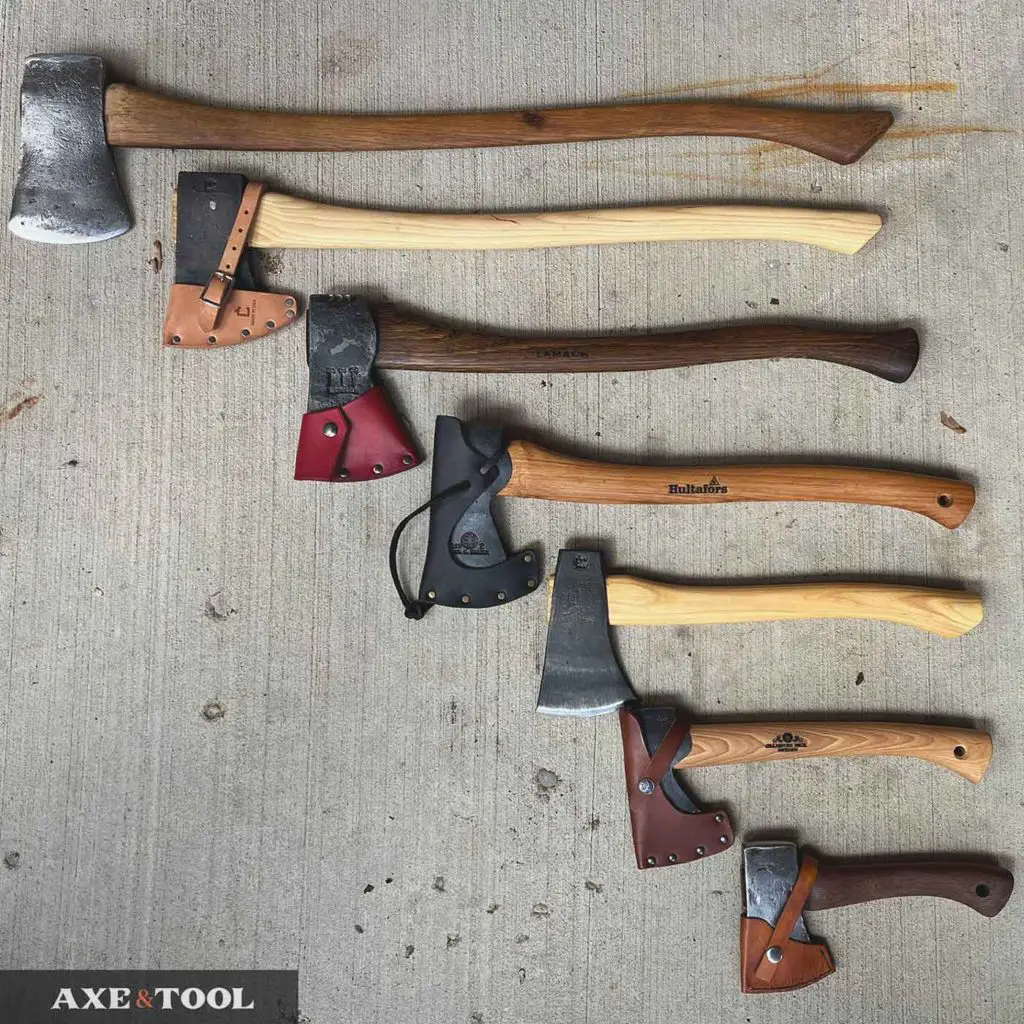
There are many different weights and lengths of felling axe, but they can be broadly sorted into 5 buckets:
| Length | Head Weight | Best for logs | |
|---|---|---|---|
| Full-size | 30″ – 36″ | 3 – 4 lbs | 12″ and up |
| Boys axe | 27″ – 29″ | 2.25 – 3 lbs | up to 12″ |
| Camp axe / Forest axe | 23″ – 26″ | 2 – 2.5 lbs | up to 10″ |
| Small axe | 18″ – 22″ | 1.5 – 2 lbs | up to 8″ |
| Hatchet | 13″ – 17″ | 1 – 1.5 lbs | up to 6″ |
Most people don’t need full-size chopping axes anymore. Despite being fun to use, the task of felling and breaking down full-grown trees now goes to the chainsaw. So the Boy’s axe has long been a favorite “work axe” for those who need an efficient chopping axe.
The smaller axes offer more portable solutions, that can still offer significant chopping potential.
Understanding The Splitting Axe
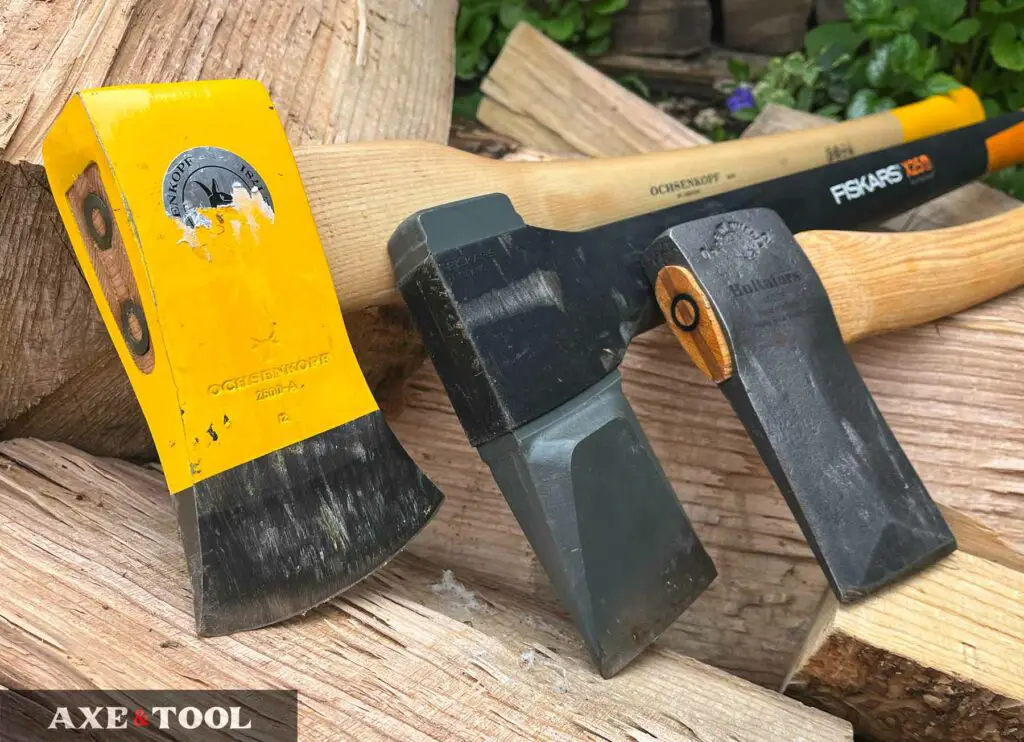
Splitting axes are designed specifically for splitting cut logs (rounds) into firewood. They are made to be swung vertically down into the flat top of the log to be split.
Splitting axe heads form a stout wide wedge that penetrate and quickly spreads logs apart. The blade is typically shorter to focus the energy outward, forcing the wood apart. The edge also tends to be flatter with fewer curves or flares to reduce the chances of getting pinched in stubborn wood.
Note: a maul is very similar to a splitting axe, but it is a unique tool. Mauls are heavier with a hardened poll and used to support a splitting axe for the toughest rounds. To learn more see Splitting Axes vs Mauls.
Splitting Axe Head Designs
The wedge shape can be formed by a simple triangular profile, or by flared/ramped cheeks, or even by spines running along the cheeks. All of these methods are meant to reduce the overall friction as the head passes through the wood.
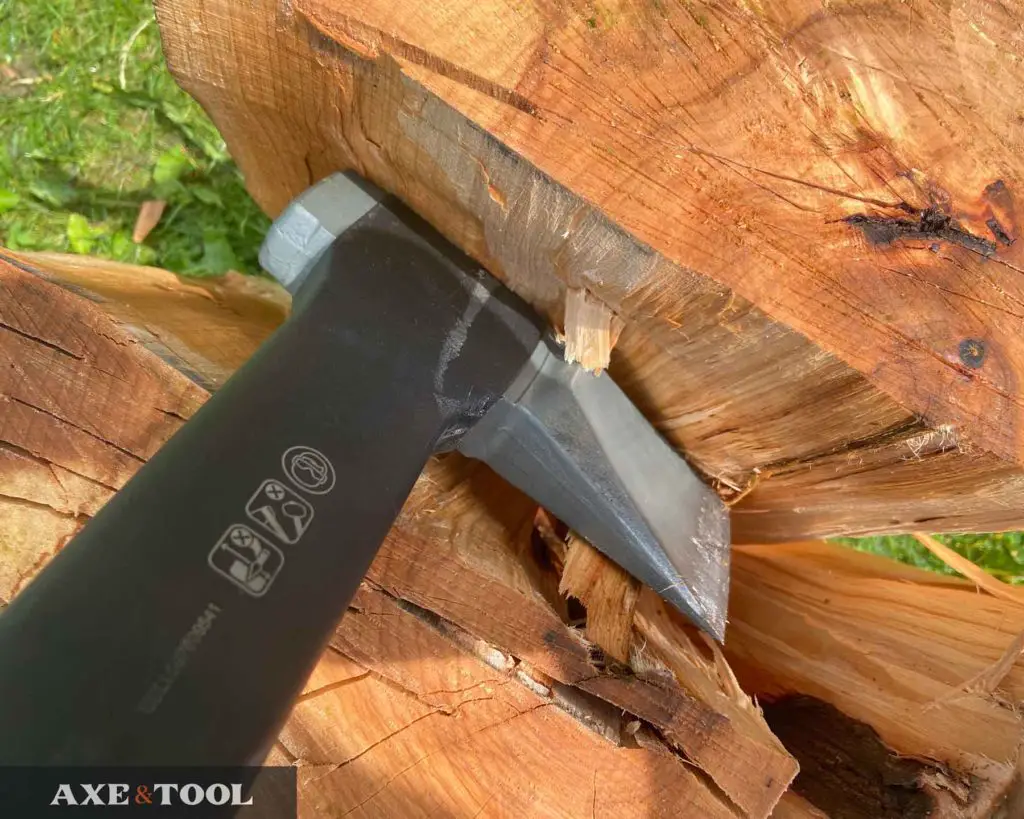
Splitting Axes are Heavier
A similar-sized splitting axe will almost always be heavier than the chopping axe. The extra weight delivers more splitting force. The table below shows the average weight ranges of the axes’ head.
| Length | Chopping | Splitting | |
|---|---|---|---|
| Full-size | 30″ – 36″ | 3 – 4 lbs | 4 – 6 lbs |
| Boys axe | 26″ – 28″ | 2 – 2.75 lbs | 2.5 – 4 lbs |
| Camp axe | 22″-26″ | 2 – 2.5 lbs | 2.5 – 3 lbs |
| Small axe | 18″ – 22″ | 1.5 – 2 lbs | 2 – 2.5 lbs |
| Hatchet | 13″ – 17″ | 1 – 1.5 lbs | 1.5 – 2 lbs |
Chopping axes need weight, but they also need to be swung horizontally, and too much weight can make it hard for the user.
Splitting Axes have Straight Handles
Splitting axes usually have straight handles as they are easier to swing consistently and rotate the axe head less when splitting with downward swings.
It’s safest to have a full-size (36″) straight handle on a splitting axe, as it’s near impossible to accidentally hit your own foot. Whereas if a shorter-handled axe is swung poorly, the head can pass right through the wood and keep moving towards you. Ouch.
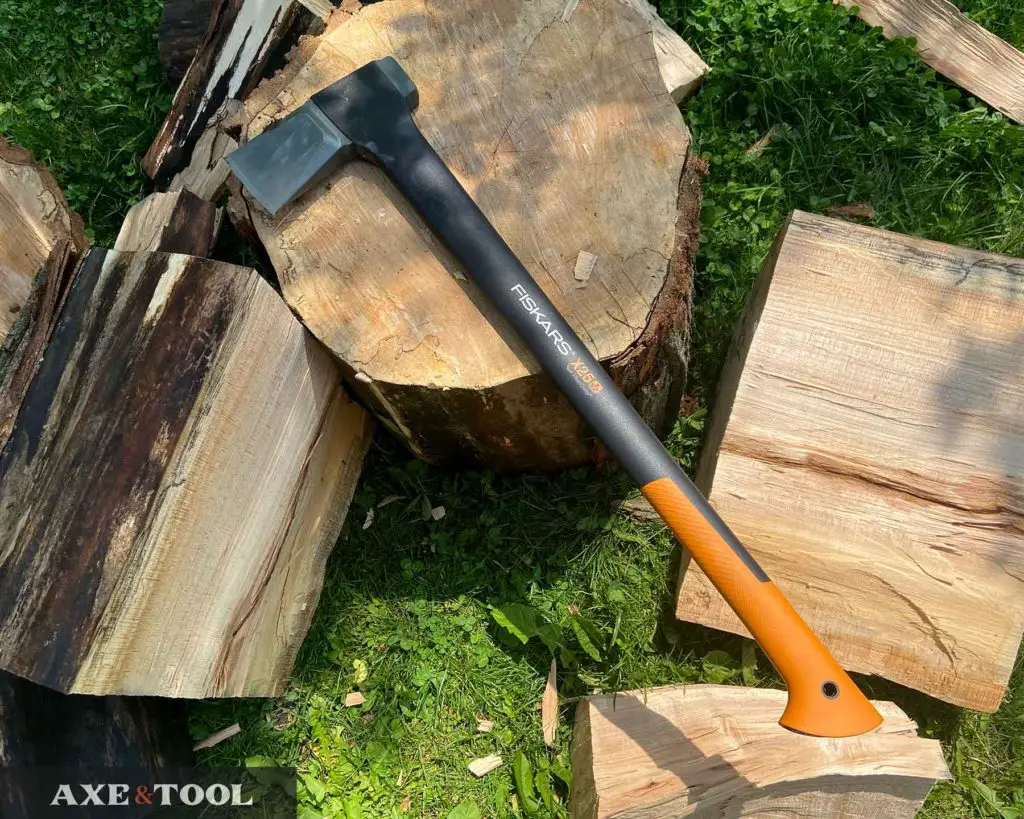
Can you Chop with a Splitting Axe?
Not really.
The flared splitting axe designs like that start thin and could chop in a pinch (Fiskars or Gransfors Bruk), but they’re not good at it. They only dig into the wood an inch or two before the blade thickens too much. But, they can clear small branches.
Please comment below If I missed something or if you have any questions. I do my best to respond to everyone.
About the author:
About the author:
Jim Bell | Site Creator
I’m just a guy who likes axes. I got tired of only finding crap websites, so I set out to build a better one myself.
I’m also on Instagram: @axeandtool

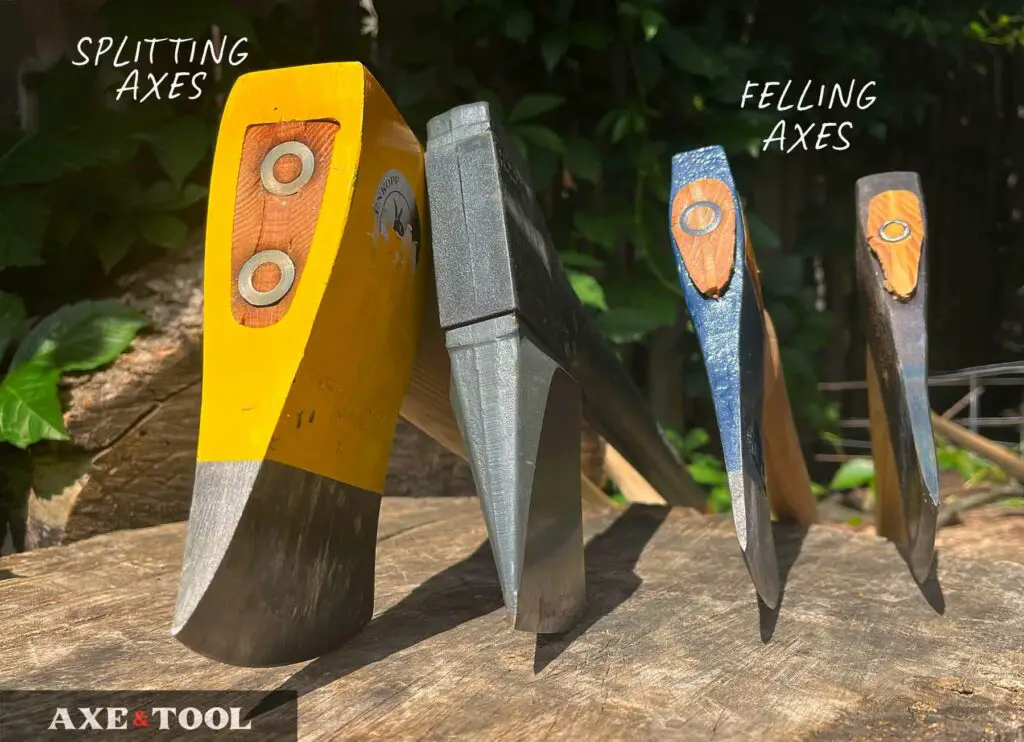
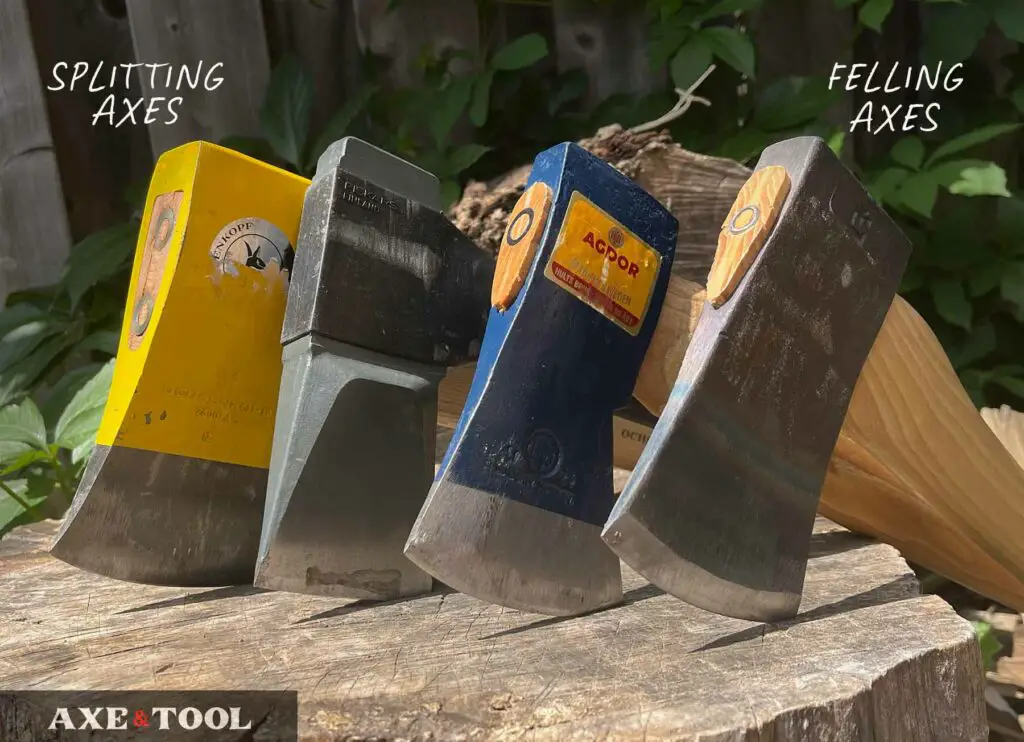


I just bought a Chopper1 Splitting Axe off Ebay. It needs some work, but I’ve never used one before. I’m curious if you’re familiar/have any tips?
Sorry, I don’t have any real experience using the Chopper1. They are very funky, and a cool classic.
Jim B.:
Thank you for creating this website and for your clearly written discussion of the distinguishing features of various types of axes. I’ve just started reading your articles and look forward to reading the rest.
Thanks so much! Always appreciate feedback as you go through more.